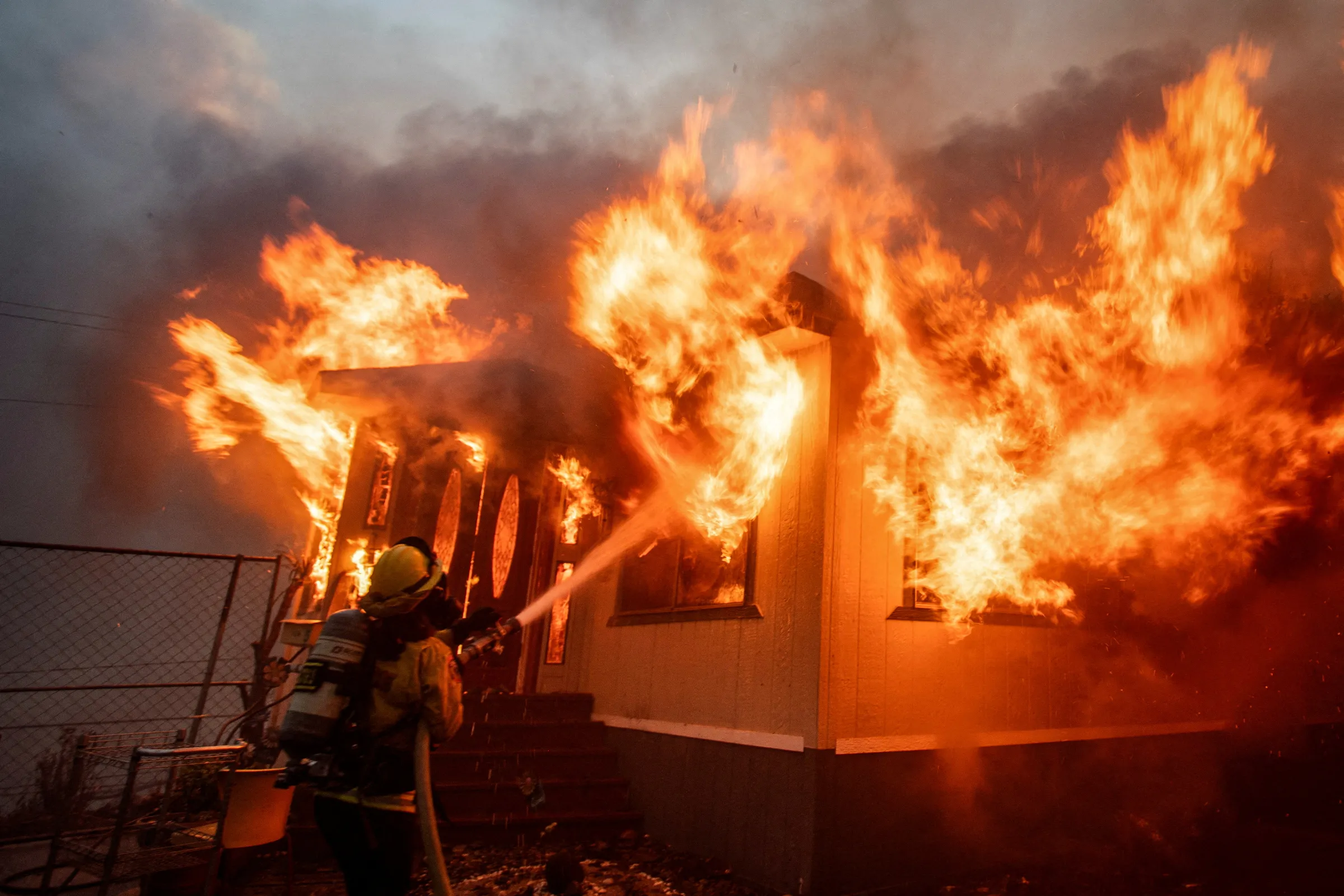How extreme heat affects wildfire risk

A firefighter battles the Palisades Fire as it burns during a windstorm on the west side of Los Angeles, California, U.S. January 7, 2025. REUTERS/Ringo Chiu
What’s the context?
Climate change and extreme temperatures, like heat waves that have ravaged parts of the U.S, fuel more destructive wildfires.
RICHMOND, Virginia - Extreme heat across the United States has left millions of Americans struggling to stay cool as dangerously high temperatures reach as far north as New England and the Pacific Northwest.
Not only is extreme heat the nation's leading weather-related killer, but the rise in global temperatures contributes to worsening climate-related disasters like wildfires around the world.
European countries like Spain and Greece have battled massive fires that broke out in August and claimed the lives of at least three people.
In southern California, thousands of people were forced to evacuate their homes after a major wildfire broke out in early August during very hot and dry conditions.
Here is how climate change is affecting wildfire risk in the United States and beyond:
What is the relationship between extreme heat, climate change and wildfires?
As temperatures rise, the heat can create drier, drought-like conditions that lay the groundwork for wildfires – most of which in the U.S. are caused by people – to become more destructive and difficult to control.
"We're seeing more widespread heat (in the U.S.) and other parts of the world as well. And the more you see that, the more evaporation, the more drought you have," said Paul Pastelok, senior meteorologist at AccuWeather, a weather forecasting company.
"So the more drought you have, that's one of the most important ingredients towards the wildfire season."
Pastelok said while there had not necessarily been a big change in the number of wildfires year-to-year recently, they were getting bigger.
"We're seeing a definite increase in the larger fires over the last 20 years," he said.
"Climate change is having an impact ... based on the warmer temperatures that we've been seeing, the warmer climate and more evaporation."
What have studies shown about recent major blazes and climate change?
The deadly Los Angeles-area wildfires in January helped prompt a fresh look at exactly how these blazes occur and what can be done to mitigate the effects of future fires.
The region had not seen significant rainfall since May 2024, meaning grasses and brush were highly flammable when the fires broke out and spread quickly due to strong, seasonal Santa Ana winds, according to a report from World Weather Attribution, a research group.
The study used a Fire Weather Index (FWI) for the region that factors in attributes like temperature, humidity and wind speed to measure fire risk.
Human-induced warming from burning fossil fuels made the peak January FWI more intense, with an estimated 6% increase in intensity, and 35% more probable, than in cooler pre-industrial times, the researchers found.
The research group also found climate change made weather conditions leading to the wildfires that killed more than 30 people in South Korea in March about twice as likely as they would have been in pre-industrial times.
The wildfires in Spain came amid a heat wave, and the Canyon Fire, which broke out on Aug. 7 northwest of Los Angeles, came as southern California faced substantially hot, dry conditions.
What can be done to mitigate the negative impacts of wildfires?
Particularly in the wake of the Los Angeles-area fires in January, forest management practices have emerged as a key issue for discussion for mitigating the impact of fires.
Clearing brush through prescribed burns and proper thinning of forests can clear ignitable fuel so that when fires do break out, they are not as intense.
Some lawmakers in Washington, D.C. are pushing legislation that would create a programme to help communities that abut the wilderness – an area known as the "wildland-urban interface" – build and retrofit with wildfire-resistant measures.
Even with advancing predictive technology, the vast majority of U.S. wildfires are caused by humans, making it exceedingly difficult to predict where the next big one will strike.
"It's hard, because you can't predict power lines, when they're going to come down ... we can't predict a person throwing his car off the side of the road," Pastelok said, referring to the apparent causes of major fires in Texas and California.
What forecasters can do, he said, is look at factors like drought monitors and soil moisture.
"Then we try to forecast patterns," he said.
This story was updated on August 15 to reflect the latest developments.
(Reporting by David Sherfinski; Editing by Ellen Wulfhorst.)
Context is powered by the Thomson Reuters Foundation Newsroom.
Our Standards: Thomson Reuters Trust Principles
Tags
- Extreme weather
- Climate and health
- Loss and damage
- Forests


















